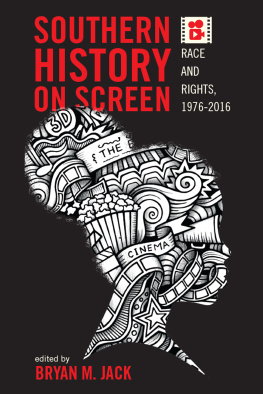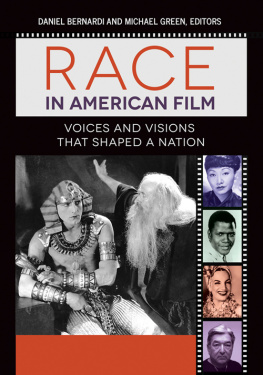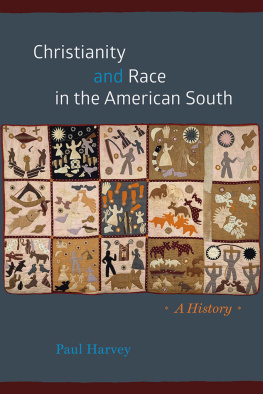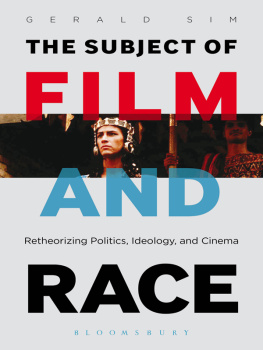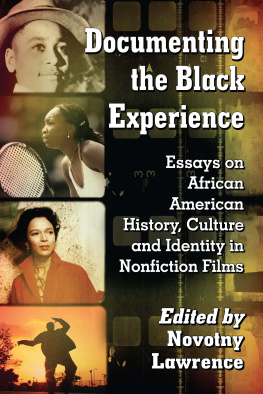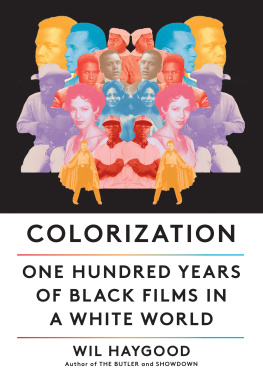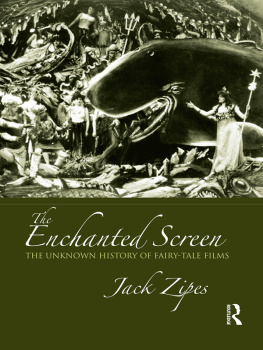SOUTHERN HISTORY ON SCREEN
SOUTHERN HISTORY ON SCREEN
RACE AND RIGHTS, 19762016
Edited by Bryan M. Jack

Due to variations in the technical specifications of different electronic reading devices, some elements of this ebook may not appear as they do in the print editions. Readers are encouraged to experiment with user settings for optimum results.
Copyright 2019 by The University Press of Kentucky
Scholarly publisher for the Commonwealth,
serving Bellarmine University, Berea College, Centre College of Kentucky, Eastern Kentucky University, The Filson Historical Society, Georgetown College, Kentucky Historical Society, Kentucky State University, Morehead State University, Murray State University, Northern Kentucky University, Transylvania University, University of Kentucky, University of Louisville, and Western Kentucky University.
All rights reserved.
Editorial and Sales Offices: The University Press of Kentucky
663 South Limestone Street, Lexington, Kentucky 40508-4008
www.kentuckypress.com
Library of Congress Cataloging-in-Publication Data
Names: Jack, Bryan M., 1969- editor.
Title: Southern history on screen : race and rights, 1976-2016 / edited by Bryan M. Jack.
Description: Lexington : University Press of Kentucky, 2019. | Includes index.
Identifiers: LCCN 2018025163| ISBN 9780813176444 (hardcover : alk. paper) | ISBN 9780813176468 (pdf) | ISBN 9780813176451 (epub)
Subjects: LCSH: Southern StatesIn motion pictures. | Historical filmsUnited StatesHistory and criticism. | Culture in motion pictures. | Race in motion pictures. | Race relations in motion pictures.
Classification: LCC PN1995.9.S66 S65 2019 | DDC 791.436/5875--dc23
This book is printed on acid-free paper meeting
the requirements of the American National Standard for
Permanence in Paper for Printed Library Materials.

Manufactured in the United States of America

| Member of the Association of University Presses |
Contents
Bryan M. Jack
Oliver Gruner
Daniel Farrell
Bryan M. Jack
Erik B. Alexander
Caroline Schroeter
Todd Simpson
Kwakiutl Dreher
Megan Hunt
Gene Kelly
Tatiana Prorokova
Introduction
Bryan M. Jack
In 2017, as part of the continuing argument over history and memory in the United States, New Orleans, Saint Louis, Baltimore, and other cities questioned the appropriateness of Confederate statues in public spaces. These statues, erected in the late nineteenth and early twentieth centuries, are symbolic not only of the Civil War but also of the Lost Cause mythology that gained precedence for so many decades after the war. This myth, despite overwhelming evidence, held that secession was about states rights rather than slavery and recast the war in terms of southern honor. Born in the years immediately following the war, by the early twentieth century this view was widely disseminated to the public through popular culture, for example, through the film The Birth of a Nation (1915), the novel (1936) and film Gone with the Wind (1939), vacation tourism to southern plantations, and advertisements. For much of the twentieth century (and after), the Lost Cause myth was an attractive perspective for many in the United States because it allowed for a reconciliation that displaced slavery and racial questions to the margins of American history.
Film, with its ability to display iconic images to mass audiences, has been particularly powerful in creating the South in the American imagination. From the original The Birth of a Nation through Remember the Titans (2000), The Help (2011), and 12 Years a Slave (2013), Hollywood has created indelible images that embed in American culture and influence public understanding of southern history and identity. From the earliest days of filmmaking, the historical South has been a frequent Hollywood subject, with hundreds of films set in the region. Because of this ubiquity, and since feature films reach such large audiences, films have profoundly shaped public discourse about southern history. Historian of the plantation South Catherine Clinton, speaks to this: Millions of Americans have had their vision of the South, race relations, and even the entire panorama of our past shaped if not wholly defined by the movie business.
However, history, especially as it relates to race, is contested terrain, and southern history especially so. People, particularly African Americans, have always challenged nostalgic views of the South, slavery, and the Civil War. The newly created NAACP launched protests against the Ku Klux Klancelebrating The Birth of a Nation when it hit theaters, and activists during the civil rights movement of the 1950s and 1960s defied the legacies of slavery contained in the hegemony of Jim Crow segregation. Today, historians of the long civil rights movement connect the original sin of slavery with modern institutional racism. Nevertheless, the old views persist. Debates over the presence of Confederate monuments in public spaces, displays of the Confederate battle flag, and representation of slavery at historic sites are just three of the more recent examples of the continuing conflict. To many, the gains of the civil rights movement (including the election of President Barack Obama) were signs of unerring progress and the beginnings of a postracial America. Events in Charlottesville, Virginia; Ferguson, Missouri; New York City; Baltimore, Maryland; Sanford, Florida; Charlotte, North Carolina; and many other places, in addition to the rise and political power of the alt-right after the 2016 election repudiate this perspective and illustrate that the battle against racism is a continuing one.
In an era when political leaders and others tout the authority of alternate facts, and label any criticism fake news, it is vital to understand how our conceptions of the past shape and are shaped by our present. Various popular culture portrayals of the South often illustrate larger issues in American society, with the South serving as the canvas for their exploration. Societies, Michael Kammen argues, reconstruct their pasts rather than faithfully record them, and they do so with the needs of contemporary culture clearly in mindmanipulating the past in order to mold the present. This volume seeks to further our understanding of how the contemporary context affects filmic reconstructions of southern history and how those reconstructions affect the present.
Using race as the primary, but not exclusive, lens and historical films as sources, this book studies the connections between contemporary historical films, southern history, and southern identity. Scholars do not universally agree on what constitutes historical films, but Jonathan Stubbss most inclusive definition guides the selection of films for this volume: films which engage with history or which in some way construct a relationship to the past regardless of whether or not they purport to deal with real people and events.subject matter, others with historical events. However, all construct relationships with and depictions of the southern past. The following questions are the volumes overarching framework, although every essay does not specifically deal with every question. What is the relationship between historical films, race, southern history, and identity? In the years since the civil rights movement, have the challenges to, and elimination of, codified Jim Crow segregation changed how historical films depict southern history? Specifically, how do films from the postcivil rights movement era portray the historical south and issues of race?

